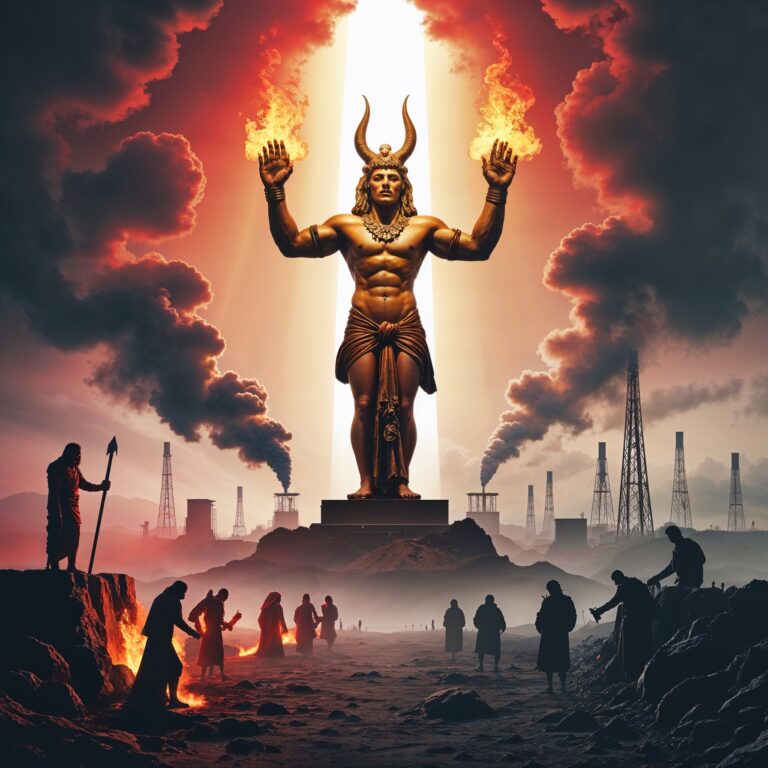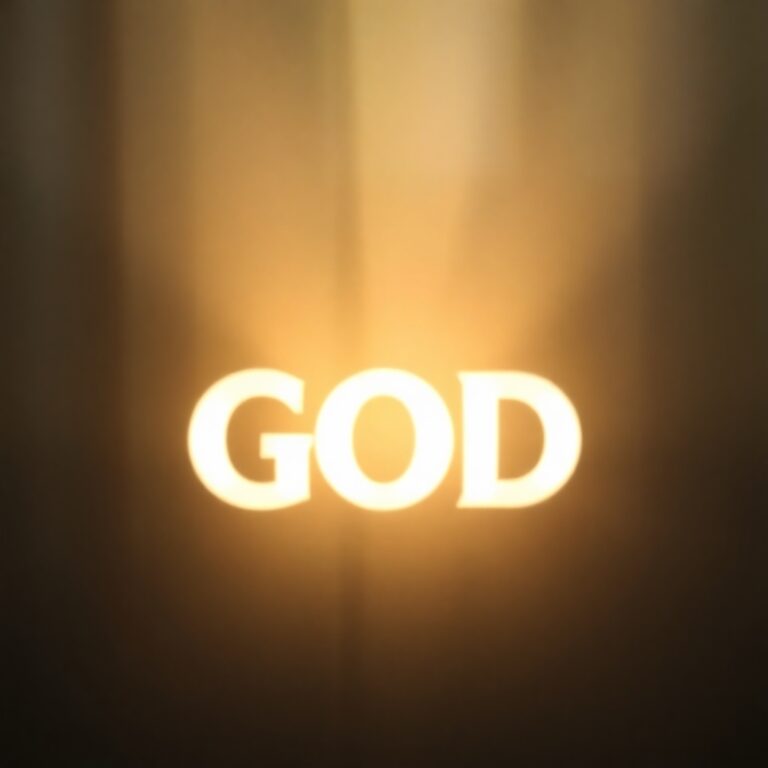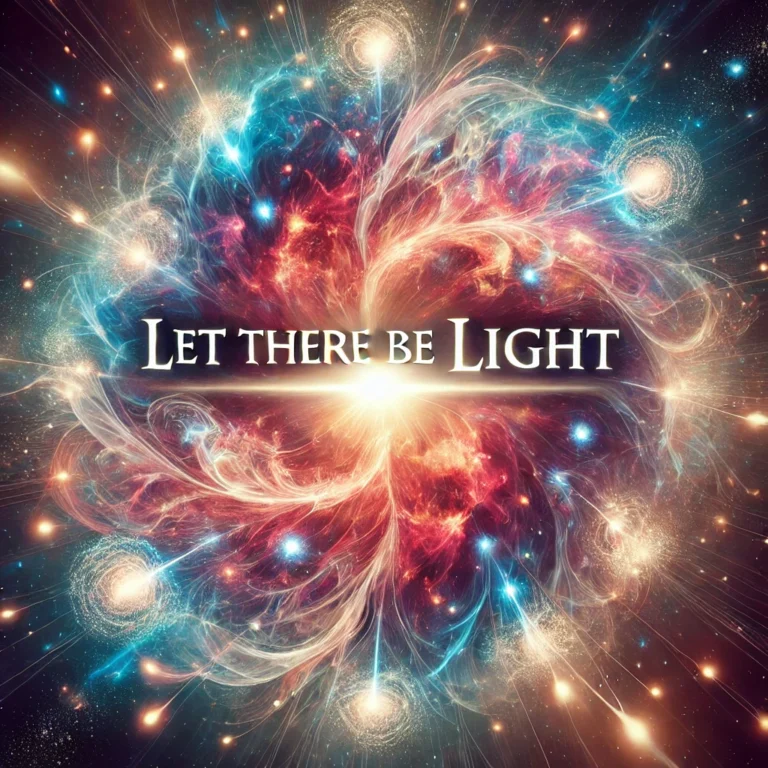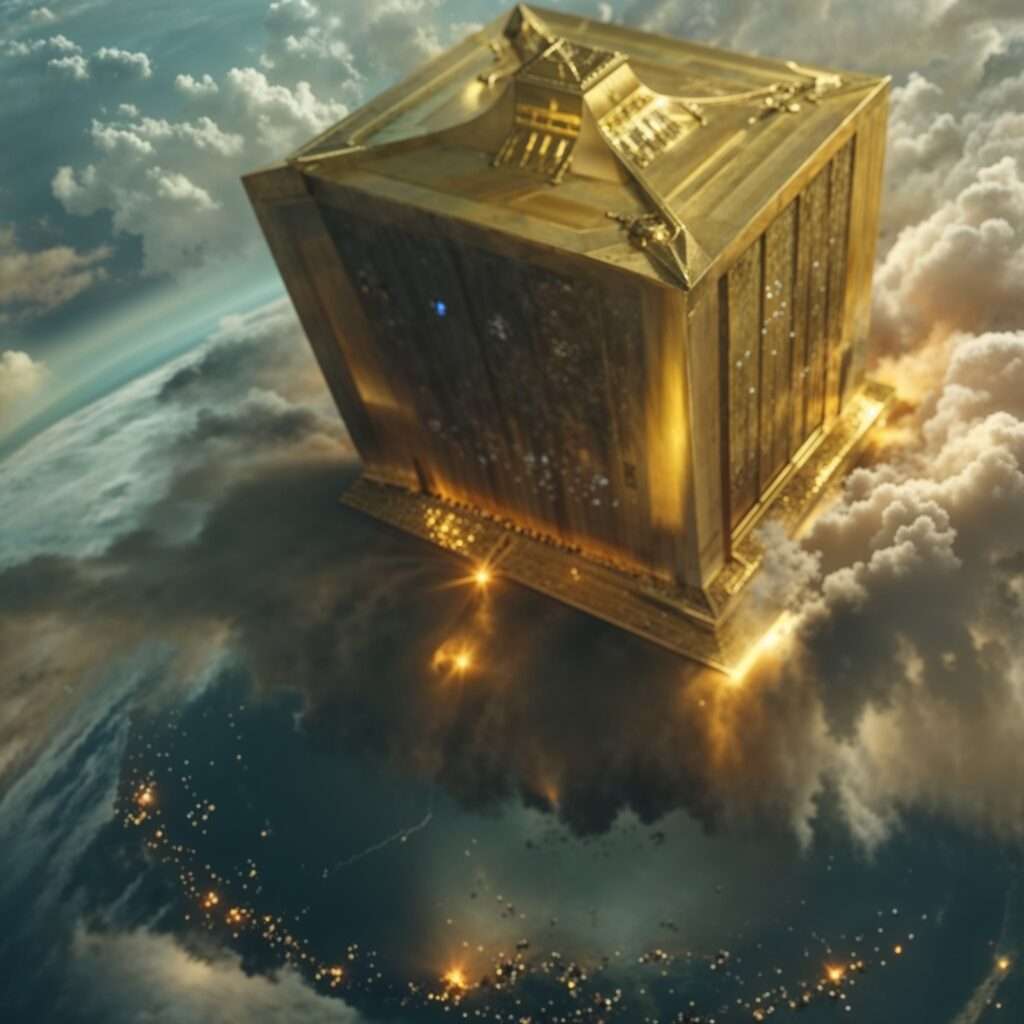
"The New Jerusalem in Revelations, a golden radiant cube descending from heaven, embodying God’s eternal presence and glory."
The New Jerusalem in Revelations is the ultimate fulfillment of God’s divine promise. It is a heavenly city, descending onto the New Earth, as vividly described in Revelation 21-22. This city is adorned with golden streets, gates crafted from pearls, and walls shimmering with precious gemstones. Moreover, the New Jerusalem symbolizes God’s eternal presence among His people. This awe-inspiring vision offers a glimpse into the glorious future awaiting all believers in God’s eternal kingdom.
Exploring the New Jerusalem in Revelations
The New Jerusalem, as described in Revelation 21 and 22, marks the culmination of God’s redemptive plan. This heavenly city descends onto the New Earth, signifying the fulfillment of His promises. It represents God’s eternal dwelling place with His people, where unmatched beauty and perfect peace reign. Furthermore, it offers a glimpse into a future filled with hope and restoration. In this article, we will examine what the Bible reveals about the New Jerusalem—its size, appearance, and the life believers will experience within its glorious walls.
The New Jerusalem in Revelations: God’s Eternal Kingdom
Revelation 21:2 vividly describes the dramatic arrival of the New Jerusalem in Revelations: “I saw the Holy City, the new Jerusalem, coming down out of heaven from God, prepared as a bride beautifully dressed for her husband.” This city is far more than a physical location. Instead, it embodies a profound spiritual reality, representing the intimate relationship between God and His people. Furthermore, its descent signifies the merging of heaven and earth, creating a place where God will dwell among His creation forever.
The New Jerusalem, as described in Revelation 21-22, descends from heaven to the New Earth but is not explicitly stated to be built or constructed on Earth in the way earthly cities are. Instead, it is portrayed as a fully prepared city, descending directly from God.
What the Bible Says:
- Prepared in Heaven:
- Revelation 21:2 says, “I saw the Holy City, the new Jerusalem, coming down out of heaven from God, prepared as a bride beautifully dressed for her husband.”
- This suggests the city is divinely prepared and complete, descending as a finished creation from God’s hand.
- Its Placement on the New Earth:
- Revelation 21:3 emphasizes its purpose: “God’s dwelling place is now among the people, and he will dwell with them.”
- The city’s descent signifies the merging of heaven and earth—God dwelling directly with His creation on the New Earth.
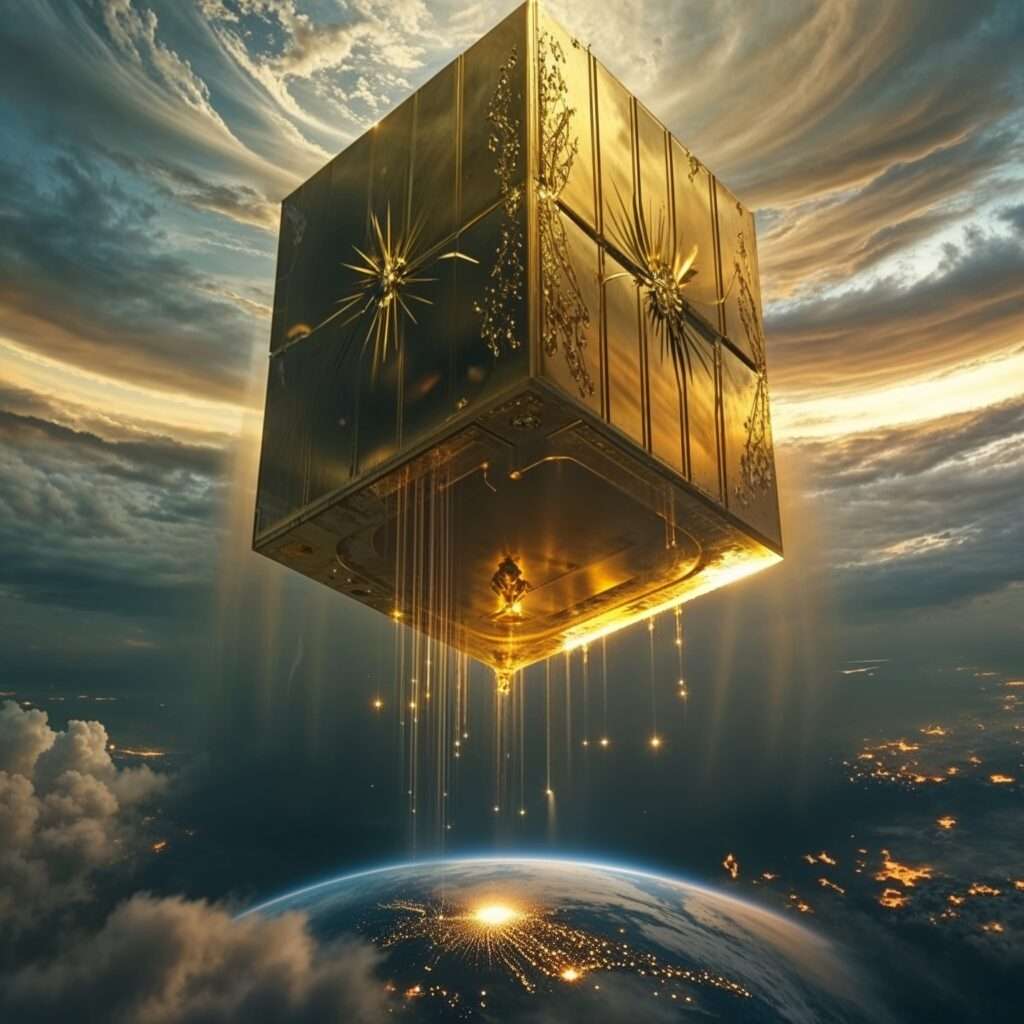
The Dimensions of the New Jerusalem in Revelations
One of the most awe-inspiring aspects of the New Jerusalem in Revelations is its incredible size. Revelation 21:16 provides precise measurements: “The city was laid out like a square, as long as it was wide. He measured the city with the rod and found it to be 12,000 stadia in length, and as wide and high as it is long.”
- A Perfect Cube: The city is designed as a perfect cube, with each side measuring approximately 12,000 stadia, or about 1,400 miles. This structure symbolizes divine perfection and mirrors the Holy of Holies in the temple, where God’s presence resided (Exodus 26:33-34). The cube’s design emphasizes the holiness and completeness of God’s eternal kingdom.
- The New Jerusalem described in Revelation 21:16 is enormous, with each side of its perfect cube measuring approximately 1,400 miles (12,000 stadia). To give a sense of its scale:
- Comparable to the United States: The base of the city would stretch roughly the distance from Maine to Florida or from the East Coast to the Rocky Mountains.
- Size Relative to a State: At 1,400 miles per side, the New Jerusalem would cover an area comparable to nearly half the size of the contiguous United States or about 2 million square miles. It would be significantly larger than Texas (the largest state in the contiguous U.S.) or Alaska.
- Comparison to a Country: The city’s base would surpass the size of India, which is approximately 1.27 million square miles, and come close to Australia‘s total land area (about 2.97 million square miles).
- Height Comparison
- Since the city is also 1,400 miles tall, it would extend far beyond Earth’s atmosphere. For perspective:
- Commercial airplanes cruise at 6-7 miles altitude.
- The International Space Station orbits at around 250 miles above Earth.
- The New Jerusalem’s height would reach 1,400 miles into space, making it far larger vertically than any structure or natural formation we can conceive.
- Symbolism
- While these dimensions may be literal, they also carry deep symbolism:
- The perfect cube reflects the shape of the Holy of Holies in the temple, emphasizing divine perfection and holiness.
- The vast size highlights the inclusivity of God’s kingdom, capable of housing all His redeemed people throughout history.
- Room for All: The immense size of the New Jerusalem underscores its inclusivity. It highlights that the city can accommodate all of God’s redeemed people throughout history, showcasing the vastness of His redemptive plan.
- This scale, whether interpreted symbolically, literally, or both, conveys the unimaginable grandeur of God’s eternal plan for His people.
- The New Jerusalem described in Revelation 21:16 is enormous, with each side of its perfect cube measuring approximately 1,400 miles (12,000 stadia). To give a sense of its scale:

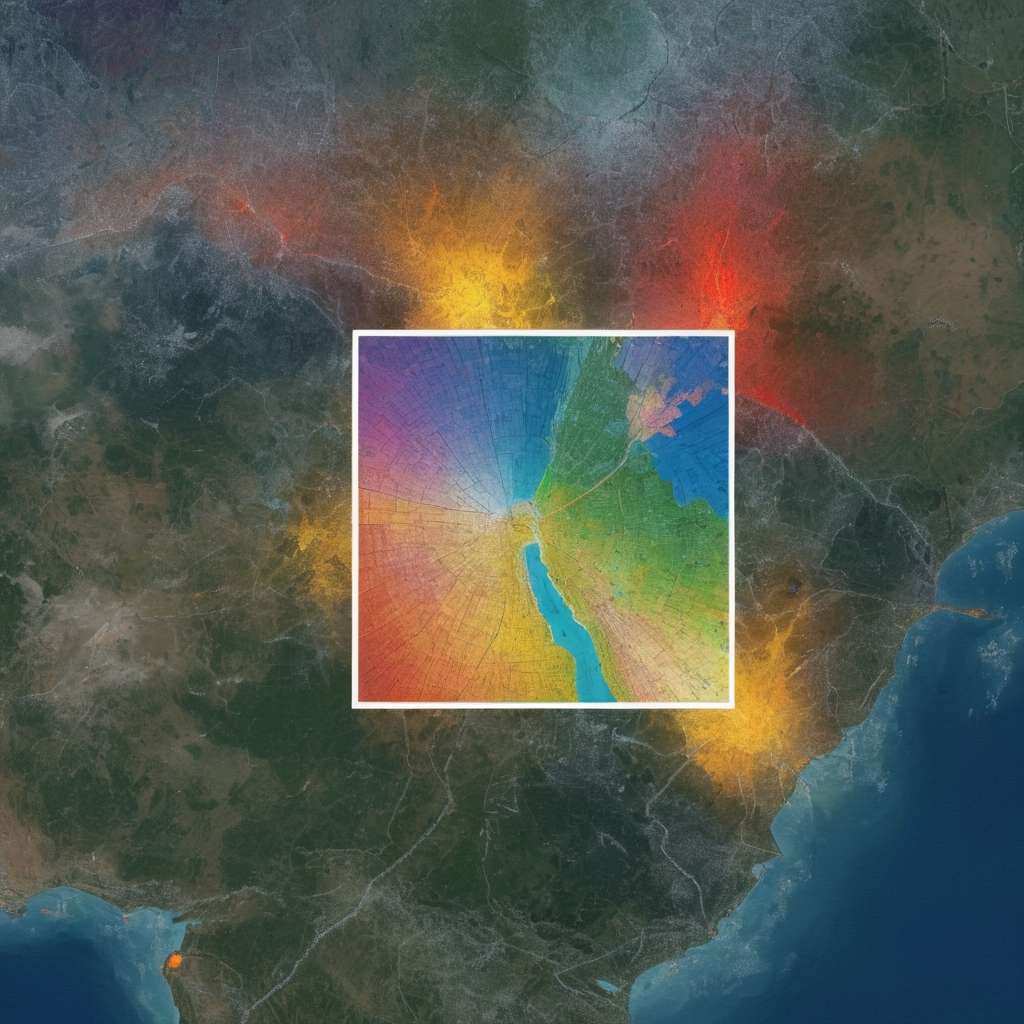
Walls and Gates of the New Jerusalem
Revelation 21:12-13 provides a stunning description of the city’s walls and gates: “It had a great, high wall with twelve gates, and with twelve angels at the gates. On the gates were written the names of the twelve tribes of Israel. There were three gates on the east, three on the north, three on the south and three on the west.”
- Towering Walls: The walls are described as great, high, and transparent (Revelation 21:18). These features symbolize the city’s security, purity, and the clarity of God’s divine presence.
- Twelve Gates: Each of the twelve gates is made from a single pearl (Revelation 21:21). Inscribed on the gates are the names of the twelve tribes of Israel, representing God’s covenant with His chosen people. The positioning of the gates—three on each side—symbolizes the global reach of God’s kingdom, welcoming people from all directions.
- Always Open: Remarkably, the gates are never closed (Revelation 21:25). This perpetual openness signifies the eternal accessibility of God’s kingdom, where there is no darkness or exclusion.
Foundations Adorned with Gemstones
The foundations of the city’s walls are described in Revelation 21:14 as being adorned with the names of the twelve apostles. This powerful symbolism highlights the unity of the Old and New Covenants. Furthermore, Revelation 21:19-20 provides a breathtaking list of the stones used to adorn these foundations: jasper, sapphire, agate, emerald, onyx, ruby, chrysolite, beryl, topaz, turquoise, jacinth, and amethyst.
- Symbol of Divine Creativity: Each gemstone reflects God’s boundless creativity and attention to beauty. These dazzling stones remind us of the divine origin of the New Jerusalem in Revelations and its perfect design.
- Spiritual Meaning: The precious stones not only add to the city’s visual splendor but also symbolize the eternal and unshakable nature of God’s promises.
Golden Streets and Gates in the New Jerusalem in Revelations
Revelation 21:21 vividly describes the streets: “The great street of the city was of gold, as pure as transparent glass.” The gates, made of single pearls, align perfectly with this imagery of perfection and divine craftsmanship.
- Unparalleled Value: The streets, paved with pure gold, symbolize the immeasurable worth of the city. The transparency of the gold highlights the purity and holiness of the New Jerusalem.
- A Gateway to Eternity: The gates of pearl stand open, welcoming all who enter. These gates symbolize God’s eternal invitation to His people, underscoring His unending grace.
The Radiance of God in the New Jerusalem
One of the most striking aspects of the New Jerusalem in Revelations is its divine illumination. Revelation 21:23 reveals, “The city does not need the sun or the moon to shine on it, for the glory of God gives it light, and the Lamb is its lamp.”
- Eternal Light: The city is perpetually bright, with no need for the sun or moon. This reflects the all-encompassing presence of God and the elimination of both literal and symbolic darkness.
- God as the Temple: Revelation 21:22 emphasizes the absence of a physical temple, stating, “I did not see a temple in the city, because the Lord God Almighty and the Lamb are its temple.” This signifies that God Himself is the focal point of worship, dwelling directly with His people in perfect unity.
The River of Life and Tree of Life in the New Jerusalem
Revelation 22:1-2 provides a breathtaking depiction of the River of Life and the Tree of Life, two central elements of the New Jerusalem in Revelations:
The River of Life
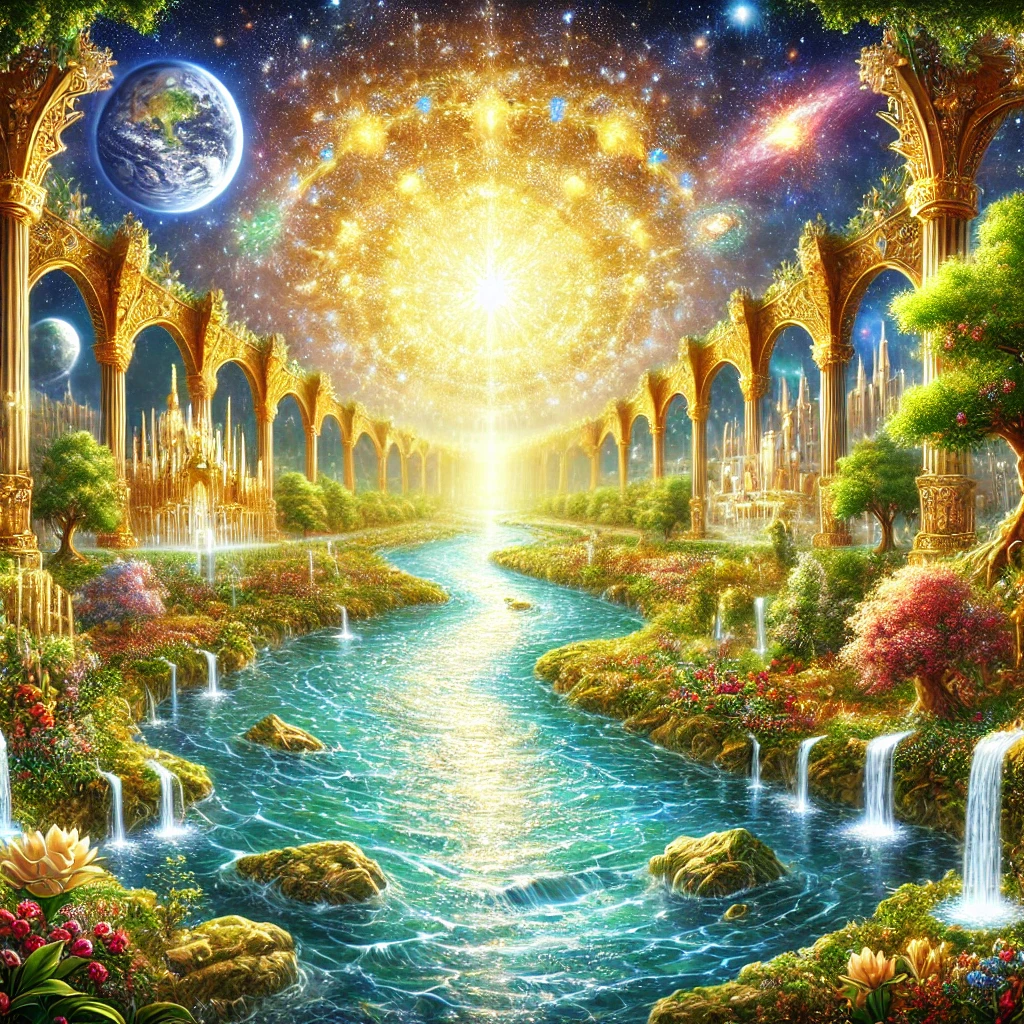
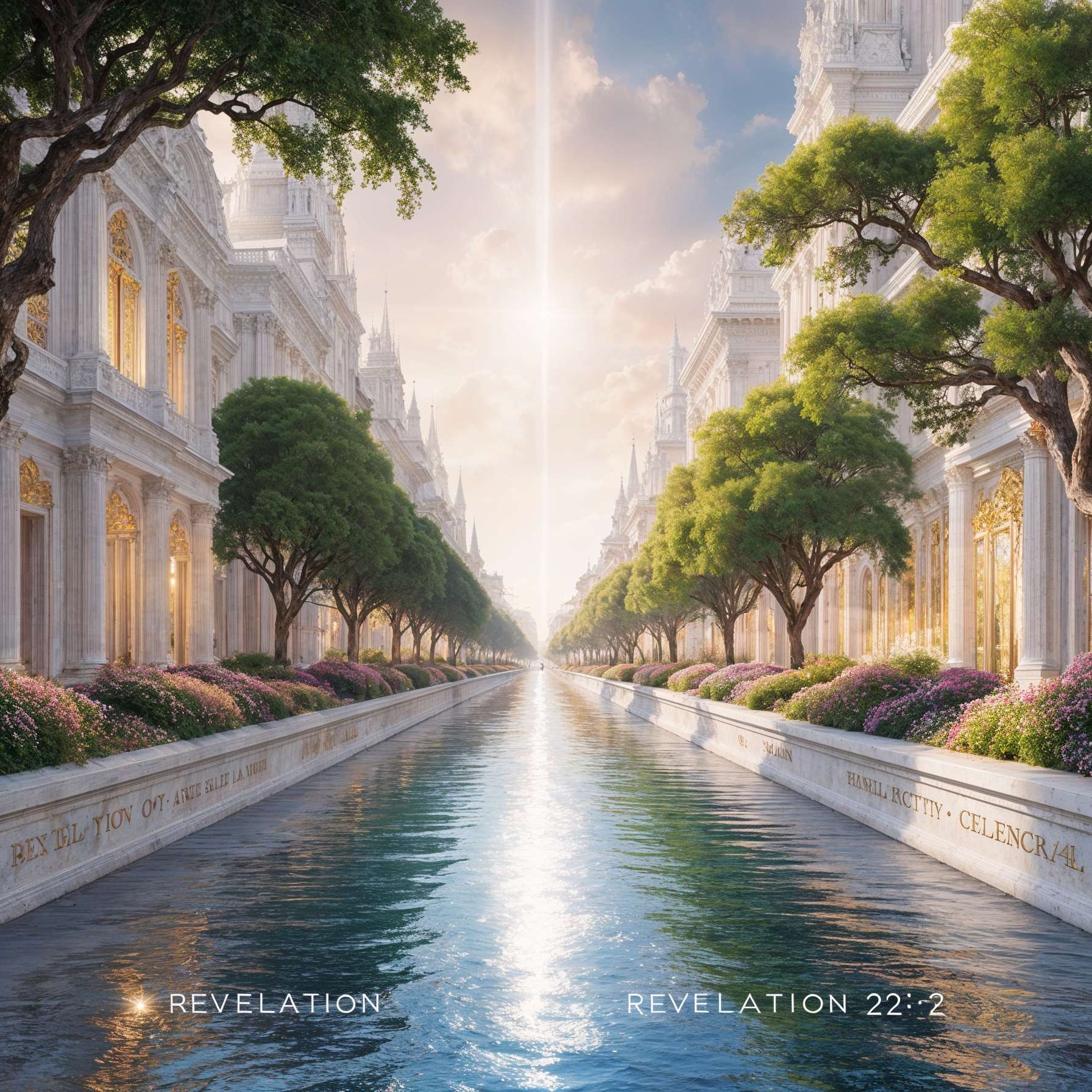
The River of Life flows from the very heart of the New Jerusalem, emanating directly from the throne of God and the Lamb. Its waters are described as “clear as crystal” (Revelation 22:1), symbolizing purity, divine sustenance, and the eternal life granted by God. This river courses through the center of the city, running “down the middle of the great street of the city” (Revelation 22:1-2), signifying its integral role in sustaining all life in the eternal kingdom.
The River of Life recalls imagery from earlier scripture, such as the rivers in Eden (Genesis 2:10), showing a restoration of paradise and the uninterrupted flow of God’s life-giving grace. It provides nourishment, refreshment, and eternal renewal for the inhabitants of the city, highlighting that God is the source of all life.
The Tree of Life
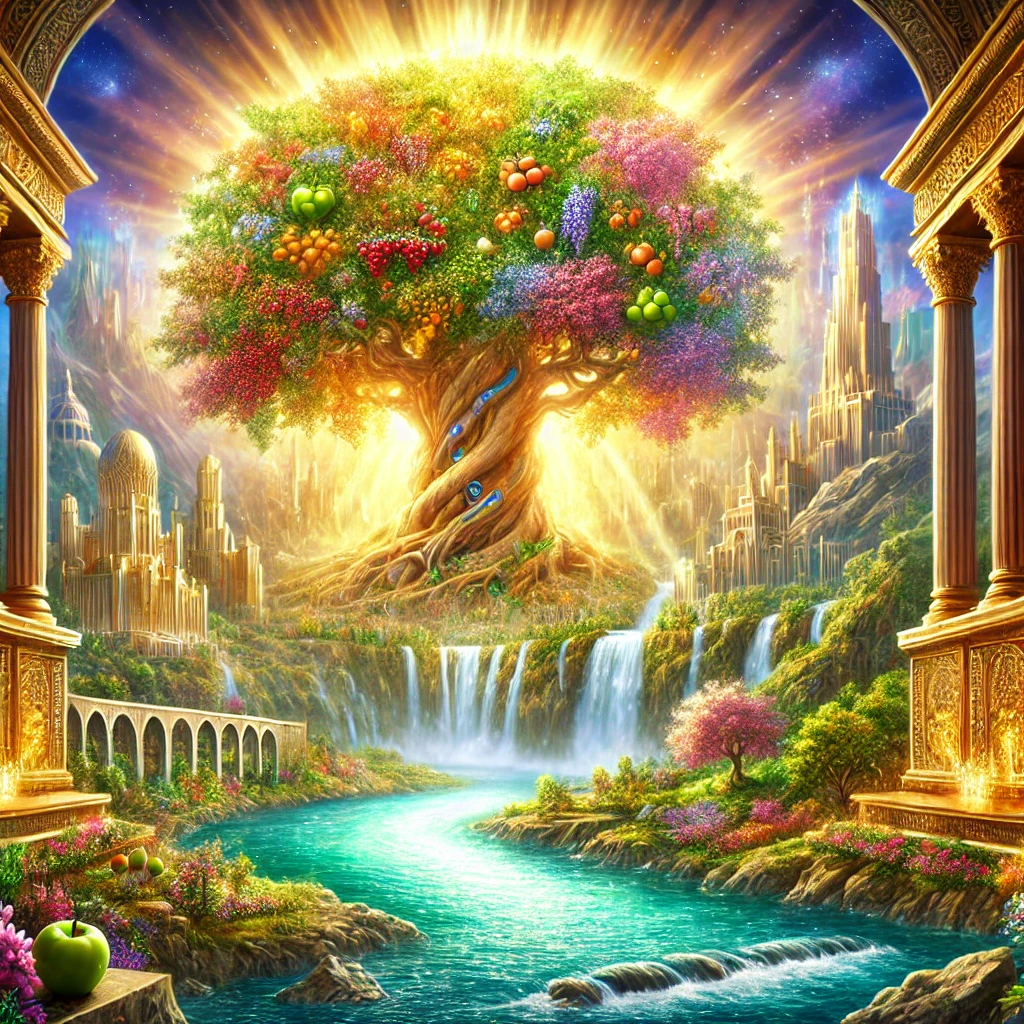
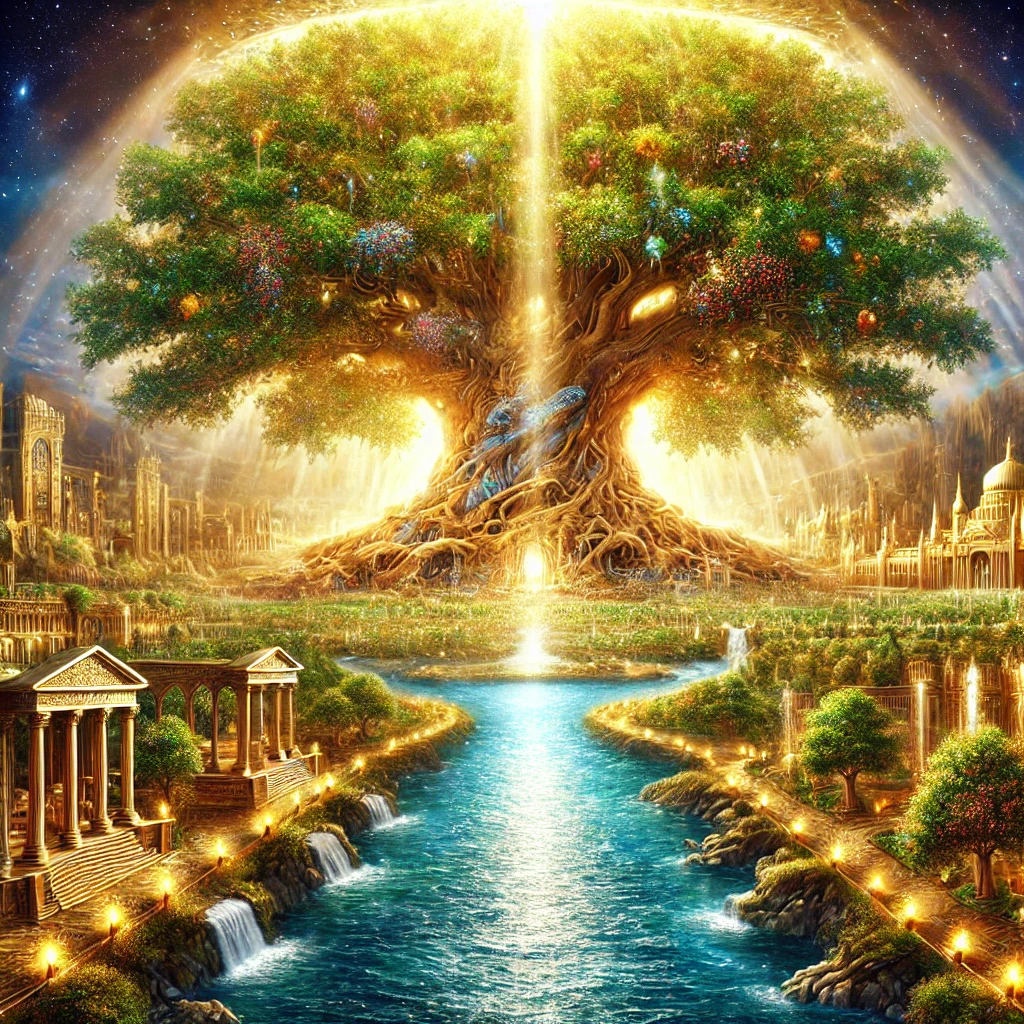
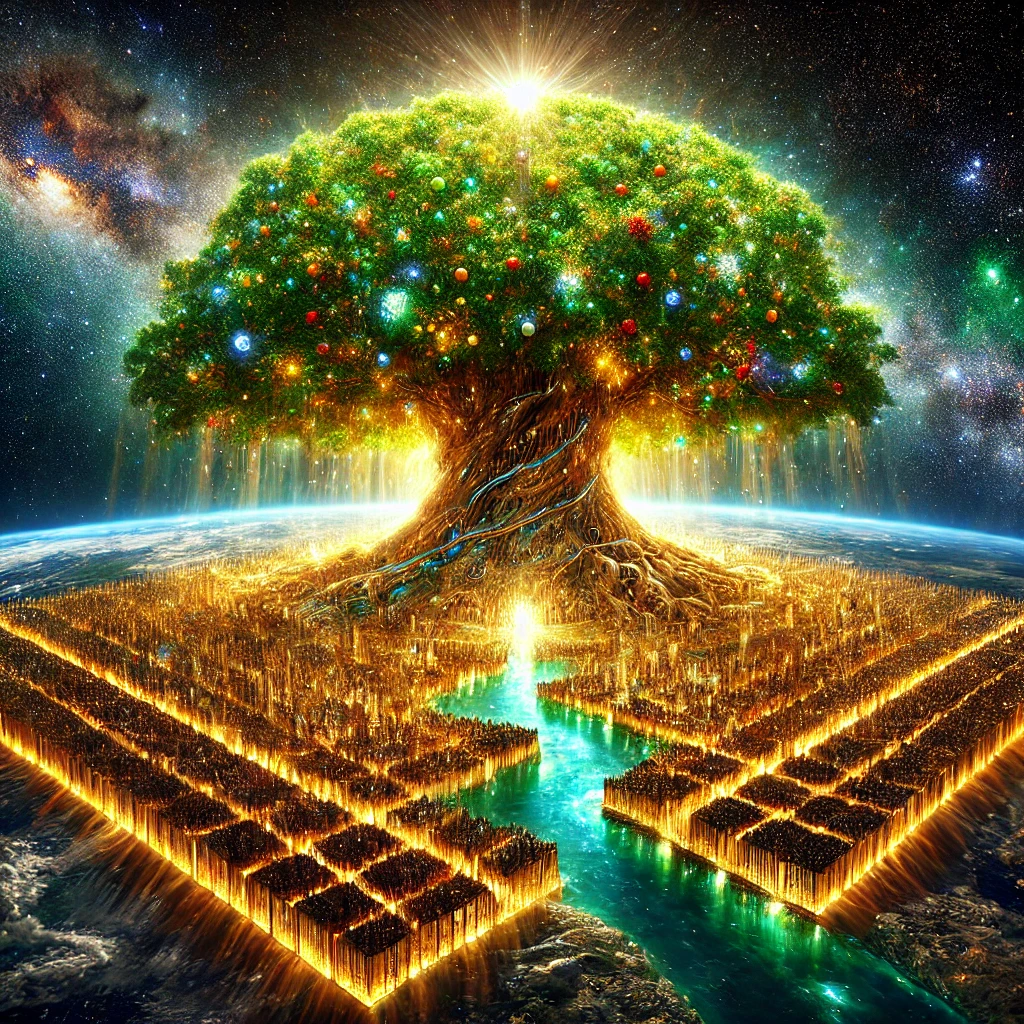
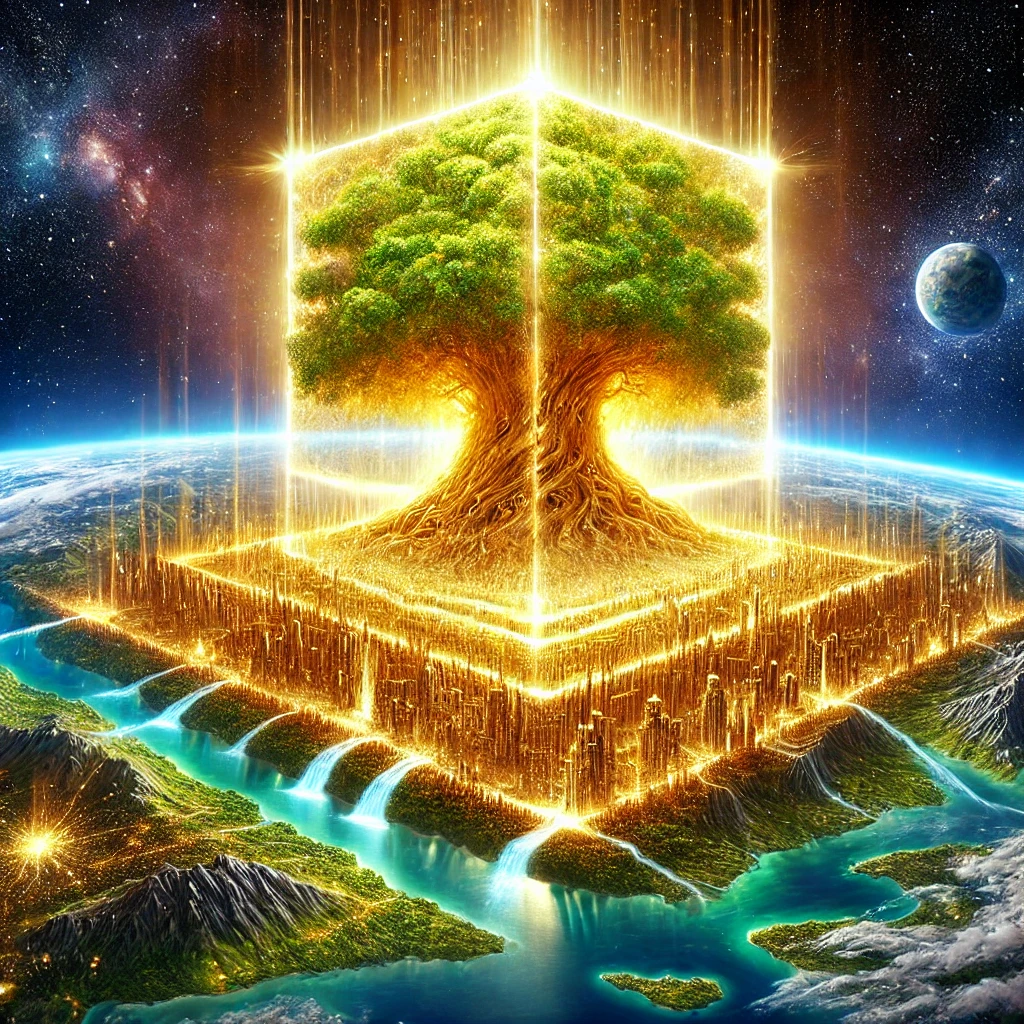
On either side of the River of Life grows the Tree of Life, a powerful symbol of eternal restoration and divine provision. First introduced in the Garden of Eden (Genesis 2:9), the Tree of Life reappears in the New Jerusalem, flourishing in its divine perfection.
- Fruit of the Tree: The Tree of Life bears twelve crops of fruit, one for each month, signifying continual abundance and provision (Revelation 22:2). Unlike the fruit of Eden that was forbidden after humanity’s fall, the fruit in the New Jerusalem is freely available to all, offering eternal sustenance.
- Healing Leaves: The tree’s leaves are for the healing of the nations (Revelation 22:2). This symbolizes spiritual and physical restoration, reconciliation among all peoples, and the end of suffering, division, and pain.
- Placement in the City: The Tree of Life grows on both sides of the River of Life, representing God’s eternal provision and accessibility to all His people. Its presence signifies that life in the New Jerusalem will be free from the curse of sin, as stated in Revelation 22:3: “No longer will there be any curse.”
Scale of the Tree of Life
The Tree of Life as described in Revelation 22:2 spans both sides of the River of Life, which runs through the center of the New Jerusalem. Since the city itself is a perfect cube measuring 1,400 miles on each side, it’s reasonable to imagine the Tree of Life as immense but likely proportional to the city’s layout.
While the text does not explicitly state the tree’s exact size, its growth on both sides of the river implies it is far larger than any earthly tree. However, it is not explicitly said to span the entire 1,400 miles of the city. Instead, the description focuses on its symbolic accessibility and divine abundance.
A reasonable interpretation might place the Tree of Life as large enough to dominate significant portions of the riverbanks, perhaps stretching for miles. If the river is central to the city’s layout, the tree would be proportionally vast—possibly miles wide and tall, but not necessarily spanning the entire 1,400 miles. The biblical language emphasizes its divine purpose rather than its absolute dimensions.
Symbolism of the River and Tree
The River of Life and Tree of Life together represent the culmination of God’s plan to restore creation to its intended glory. The river signifies God’s unending provision of life, while the tree represents complete healing, reconciliation, and the eternal abundance of God’s kingdom.
This imagery highlights the New Jerusalem as a place of life, renewal, and divine presence, where humanity will forever enjoy the fullness of God’s blessings.
Why These Elements Matter
The River of Life and the Tree of Life are profound reminders of God’s eternal provision and His desire for communion with His people. They restore what was lost in Eden, symbolizing the redemption of humanity and the eternal peace and joy found in the New Jerusalem in Revelations.
In this eternal city, God Himself is the source of life, nourishment, and healing, as symbolized by these two awe-inspiring features. This vivid biblical imagery inspires hope for believers, inviting reflection on the perfection and restoration awaiting in the eternal kingdom.
Life in the New Jerusalem in Revelations
Revelation 21:4 describes the transformative reality of life in the New Jerusalem in Revelations: “He will wipe every tear from their eyes. There will be no more death or mourning or crying or pain, for the old order of things has passed away.” This city represents the ultimate fulfillment of God’s promise to redeem and restore His creation.
- Perfect Fellowship: Humanity will experience perfect unity with God and one another. Life in the city will be free from sin, sorrow, and suffering. This harmony reflects the restoration of the relationship between God and His people that was lost in Eden.
- Eternal Service and Worship: Revelation 22:3 emphasizes: “His servants will serve him.” Every action will become an act of joyful worship, bringing glory to God in all things. Service in the New Jerusalem will be a source of fulfillment, not burden.
- Unending Joy: The city is a place of eternal joy, where every longing is satisfied in the presence of God. The promise of no more pain or tears underscores the total renewal of creation and the removal of all that separates humanity from divine peace.
A Unified Creation
Revelation 21:24-26 offers a glimpse of the city’s inclusivity: “The nations will walk by its light, and the kings of the earth will bring their splendor into it.” The New Jerusalem in Revelations transcends division, uniting all people under the light of God’s glory.
- Diversity in Unity: The city celebrates the rich diversity of God’s people while fostering perfect harmony. Every nation and tribe will come together, bringing their unique splendor and culture to worship God.
- Global Worship: The city’s openness—symbolized by gates that are never closed—welcomes all who have accepted God’s invitation, signifying His universal plan of redemption.
An Invitation to the Eternal Kingdom
The New Jerusalem in Revelations is more than just a vision of the future; it is an open invitation for all to join God’s eternal kingdom. Revelation 22:17 declares: “The Spirit and the bride say, ‘Come!’ And let the one who hears say, ‘Come!’ Let the one who is thirsty come; and let the one who wishes take the free gift of the water of life.”
- A Call to Salvation: This city is not exclusive but extends God’s invitation to everyone. It promises eternal life to those who accept His gift of salvation through Jesus Christ.
- Hope for All: The description of the New Jerusalem serves as both a promise and a call to action, urging believers to live in anticipation of God’s eternal kingdom and to share the message of salvation with others.
Conclusion
The New Jerusalem in Revelations is more than a physical city; it is the pinnacle of God’s redemptive plan. It is a place where unimaginable beauty meets eternal peace, and where perfect unity between God and His people is fully realized. Every aspect, from its gemstone-adorned foundations to its streets of gold, reflects God’s glory and His desire to dwell with His people. As Revelation 21:5 declares, God will make all things new in this eternal kingdom.
This vision of the New Jerusalem should inspire believers with hope and faith. It is not just a promise for the distant future but a call to live today with the expectation of God’s eternal plan. One day, we will walk the golden streets of the New Jerusalem, forever basking in the light of God’s presence and glory.
DARWIN’s Take: The Eternal City and Humanity’s Hope
The New Jerusalem isn’t merely an architectural wonder or a future destination; it’s a profound challenge to how we live in the present. Revelation describes a city so magnificent it surpasses human understanding—walls shimmering with gemstones, gates carved from pearls, and streets gleaming with gold. Yet the city’s true beauty lies not in its grandeur, but in its meaning.
The New Jerusalem embodies humanity’s long-awaited return to God’s presence, a closeness we lost in Eden. This city needs no temple or sun because God Himself is its light, its temple, and its reason. But this vision also demands a question: are we living as though this kingdom is real? Or are we consumed by building earthly kingdoms, chasing fleeting fulfillment while neglecting eternal purpose?
This city reminds us that history is not random. Every moment of rebellion, every act of redemption, and every promise of restoration has been leading here. The New Jerusalem is not just a promise; it is a fulfillment—a culmination of God’s intricate plan for His creation. And perhaps its most humbling truth is this: its gates stand perpetually open, a testament to God’s eternal invitation. Whether we choose to walk through them is the ultimate decision we face.s this: the gates of this city are always open. But whether we choose to walk through them is up to us.
Sources
Explore Related Topics
Deepen your understanding of the New Jerusalem and its place in God’s eternal plan with these thought-provoking articles:
- Eternal Kingdom: Life in the New Creation
Discover how the New Jerusalem fits into the broader vision of the New Earth and the Eternal Kingdom as described in the Bible. - Heavenly Body: A Biblical Exploration
Learn about the glorified bodies believers will receive in the eternal kingdom and how they enable us to live in the presence of God. - The Throne and Kingdom of Heaven: Real and Tangible
Explore the throne of God in the New Jerusalem and its significance as the center of God’s eternal rule. - The Kingdom of God Explained: Present Reality and Future Hope
Understand how the Kingdom of God is both a present reality and a future promise, culminating in the New Jerusalem. - Second Coming Signs Fulfilled
Examine the prophecies fulfilled leading up to the Second Coming of Christ and the establishment of the eternal kingdom. - Second Coming of Jesus: Prophecies Fulfilled
Dive into the prophetic timeline leading to Jesus’ return and how it connects to the New Jerusalem.
External Sources:
- What is the New Jerusalem? – GotQuestions.org
This article provides a comprehensive overview of the New Jerusalem, discussing its biblical description, significance, and the promises it embodies for believers. - The New Heaven and New Earth as Depicted in Revelation 21-22 – BibleProject
BibleProject offers an insightful analysis of the New Heaven and New Earth, exploring the imagery and themes presented in Revelation 21-22, including the New Jerusalem. - New Jerusalem Meaning – Bible Study Tools
This resource delves into the meaning and symbolism of the New Jerusalem, providing biblical references and interpretations to aid in understanding its role in eschatology.
FAQ: Understanding the New Jerusalem in Revelations
1. What is the New Jerusalem in Revelations?
The New Jerusalem, described in Revelation 21-22, is a heavenly city that descends from God onto the New Earth. It represents God’s eternal dwelling place with His people. The city is a symbol of redemption, perfect unity, and the fulfillment of God’s promises.
2. Why is the New Jerusalem important in biblical prophecy?
The New Jerusalem is the culmination of God’s redemptive plan for humanity. It signifies the merging of heaven and earth, where believers will experience eternal peace, joy, and direct fellowship with God. Revelation 21:5 declares, “I am making everything new,” emphasizing the restoration of creation.
3. What does the New Jerusalem look like?
The New Jerusalem is described as a magnificent city with walls of jasper, gates made from single pearls, and streets of pure gold (Revelation 21:18-21). It has twelve gates, each named after the twelve tribes of Israel, and its walls are adorned with twelve types of precious stones.
4. How big is the New Jerusalem?
Revelation 21:16 reveals that the city is a perfect cube, measuring 12,000 stadia (approximately 1,400 miles) on each side. This vast size symbolizes the inclusivity of God’s kingdom, capable of housing all His redeemed people.
5. Is there a temple in the New Jerusalem?
No, there is no physical temple in the New Jerusalem. Revelation 21:22 states, “I did not see a temple in the city, because the Lord God Almighty and the Lamb are its temple.” God’s presence is the central focus, making a separate temple unnecessary.
6. What is life like in the New Jerusalem?
Life in the New Jerusalem is characterized by perfect fellowship with God and one another. Revelation 21:4 promises no more death, sorrow, or pain. The city is a place of eternal joy, service, and worship, where believers will live in harmony.
7. What is the significance of the Tree of Life in the New Jerusalem?
The Tree of Life, described in Revelation 22:2, grows along the River of Life and bears twelve kinds of fruit, yielding a new crop every month. Its leaves are for the healing of nations, symbolizing restoration and eternal provision.
8. How is the New Jerusalem illuminated?
The city is illuminated by the glory of God and the Lamb. Revelation 21:23 explains, “The city does not need the sun or the moon to shine on it, for the glory of God gives it light, and the Lamb is its lamp.”
9. Who will inhabit the New Jerusalem?
The New Jerusalem is home to all of God’s redeemed people. Revelation 21:27 states, “Nothing impure will ever enter it, nor will anyone who does what is shameful or deceitful, but only those whose names are written in the Lamb’s book of life.”
10. What invitation does the New Jerusalem extend to believers?
Revelation 22:17 offers a universal invitation: “Let the one who is thirsty come; and let the one who wishes take the free gift of the water of life.” This call emphasizes that the New Jerusalem is open to all who accept God’s gift of salvation.
